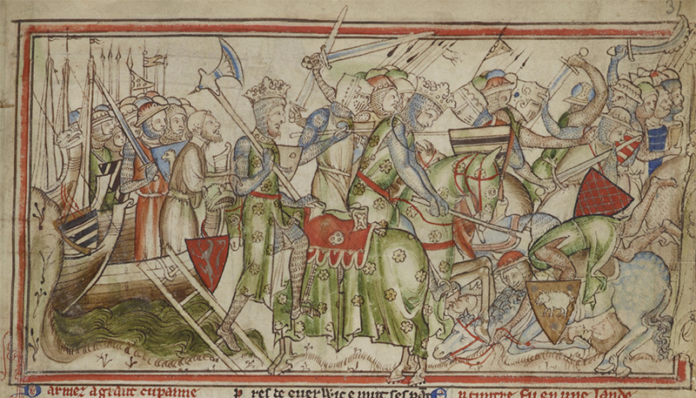
The Battle of Fulford, which took place five days before that of Stamford Bridge, saw invader Harald of Norway outnumber and gain victory over English forces.
King Harald of Norway landed in England in September 1066, during one of the most turbulent years in England’s history. Following the death of King Edward the Confessor, England’s throne was in dispute, and Harald of Norway was just one of several claimants.
The Battle of Fulford, September 1066
The battle took place just days after Harald had landed in England with around 150,000 men. His army joined forces with Earl Tostig, estranged brother of Harold Godwinson, who was another claimant to the throne and who would fight Harald days later at Stamford Bridge. They were pitched against the armies of two northern commanders, Morcar of Northumbria and Edwin, Earl of Mercia.
At the Battle of Fulford, the two forces pitched camp two miles south of York. The English section of the battlefield was difficult terrain, with the River Ouse on one side, and swampland on the other. Harald’s forces seemed to have the advantage, being placed on higher ground, but at the start of fighting, not all of his men had arrived at the battleground.
The Opposing Armies in the Battle of Fulford
The English forces were the first to attack, before the Norwegians had finished lining up fully, and at first the English seemed to have the advantage, pushing Harald’s unprepared forces back over the marshy ground. Both sides had already seen that the terrain would make it difficult to make a safe retreat. However, the Norwegians gradually began to gain ground, launching three lines of attack on the English. When fresh Norwegian forces arrived onto the battleground, the English were defeated and by the end, had been outnumbered by around two to one. Harold Godwinson’s men Morcar and Edwin both survived and the English forces surrendered following a promise that the city of York would not be looted or taken.
The Defeat of Harold Godwinson’s Forces at Fulford in 1066
The victory meant that Harald of Norway felt confident enough to continue with his claim to the English throne, and believed his forces were strong enough to move onto the city of York. However, Harald’s defeat and death at the Battle of Stamford Bridge, less than a week later, put this contender for the throne out of the running permanently. So severe was this defeat, that most historians see this as the last serious attack by Viking forces on England.
This battle had given Harald of Norway the confidence to belief that further incursions into England were possible, and that, with the help of his men, he might have a chance of gaining the throne. But the Battle of Stamford would soon put an end to those hopes.
Sources:
- Mallalieu, Huon 1066 and Rather More [Frances Lincoln, 2009]
- Jones, Charles The Forgotten Battle of Fulford 1066 [The History Press, 2007]







